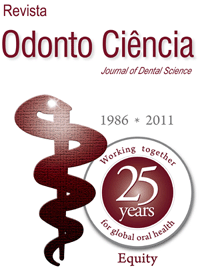PURPOSE: To assess the applicability of the Tanaka-Johnston analysis in Brazilian subjects. METHODS: A total of 650 plaster casts of dental arches were examined, and 95 were selected to comprise the study sample. The largest distance between the contact points of mandibular and maxillary incisors as well as mandibular canines and premolars on the right side were measured with a calliper held parallel to occlusal plane and perpendicular to the long axis of the tooth. A prediction of the length of canines, and first and second premolars in both arches was made by using the Tanaka-Johnston analysis. Predicted and actual dental sizes were compared in relation to the gender and ethnic group of the sample subjects. RESULTS: The Tanaka-Johnston analysis overestimated the sum of mesiodistal widths of maxillary and mandibular canines and premolars only in the white female group. The difference between the Tanaka-Johnston prediction and the actual measurement was significant. For the other groups studied no statistical difference was observed. CONCLUSION: The Tanaka-Johnston analysis provided an acceptable prediction of the sum of mesiodistal widths of maxillary and mandibular canines and premolars in black and white Brazilian men, but not in white Brazilian women.
Mixed dentition; evaluation; radiography





